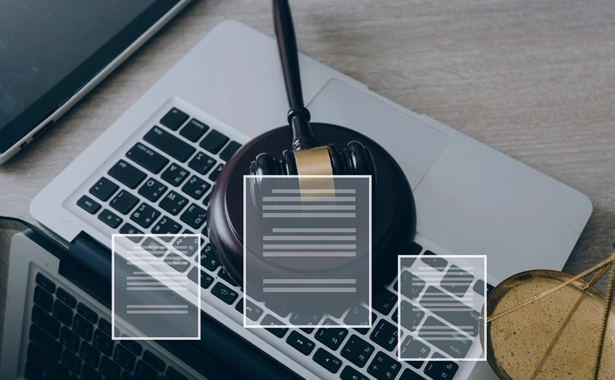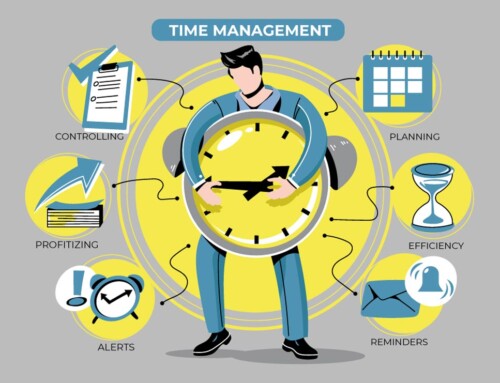Contents
The increasing volume of tasks and clients presents a significant challenge for law firms, making the legal document automation a critical issue that must be approached with efficiency and diligence to ensure adequate service for clients. The documentation process is frequently labor-intensive, requiring substantial attention and effort. Conversely, traditional document management for law firms are often prone to errors, which can result in various complications. Therefore, there is a pressing need for innovative legal document automation solutions to enhance document management practices in law firms.
1. Understanding Legal Document Automation
I. What Is Legal Document Automation?
Legal Document Automation is a process in which software is used to streamline the drafting, editing, and organization of legal documents through customizable templates, pre-set clauses, and intelligent conditional logic. This technology automates repetitive elements in legal documents, allowing lawyers to produce accurate and compliant documents efficiently. By leveraging automation, legal professionals can reduce manual input, minimizing the chance of human error and improving consistency across all documentation. RunSensible’s automation tools are specifically designed for law firms, providing a seamless, user-friendly interface that enables legal teams to focus on strategic work while automating routine tasks.
II. The Evolution of Document Management in Law Firms
Document management for law firms has evolved from manual, paper-based systems to sophisticated digital tools. Initially, document management simply meant maintaining organized files, often in large storage rooms or with basic word processing tools. However, these systems required significant manual effort and were prone to human error. With the development of digital document management, firms began to adopt electronic filing and cloud storage, which helped increase accessibility and improve storage efficiency. Today, platforms like RunSensible integrate Legal Document Automation into document management, empowering firms to draft, store, and retrieve documents in one cohesive system. This evolution enables law firms to maintain high standards while freeing up time to serve clients more effectively.
III. Types of Documents Suitable for Automation
Certain legal documents are particularly suited for automation, given their repetitive structures and standard formatting. Key documents that benefit from Legal Document Automation include:
- Contracts and agreements: Documents like NDAs, service agreements, and partnership contracts often follow specific templates and can be rapidly assembled using automation tools.
- Wills and estate planning documents: These often involve similar legal language and clauses, making them prime candidates for automated drafting.
- Legal forms and pleadings: Many litigation forms and court documents, such as motions and discovery requests, can be automated to ensure compliance and streamline case preparation.
With RunSensible, firms can automate the drafting of these types of documents, creating accurate templates that are both customizable and compliant with legal standards. This approach enables lawyers to produce well-structured documents quickly, enhancing efficiency and allowing firms to serve clients promptly and accurately.
2. Key Advantages of Legal Document Automation
I. Increased Efficiency and Productivity
Legal Document Automation significantly boosts productivity by reducing the time spent on repetitive tasks like drafting and editing. Lawyers and staff can create accurate, tailored documents quickly by using automated templates rather than starting from scratch. This streamlined approach allows attorneys to handle a higher volume of cases, ultimately maximizing billable hours while reducing administrative overhead. RunSensible’s automation features provide firms with the necessary tools to automate repetitive tasks efficiently, freeing legal professionals to focus on client interactions and case strategy rather than time-consuming document preparation.
II. Enhanced Accuracy and Consistency
Accuracy and consistency are critical in legal documentation, where even minor errors can lead to compliance issues or misunderstandings. By automating standard language and clauses, document automation minimizes human error and ensures uniformity across all documents produced. RunSensible’s automated templates standardize content while allowing for case-specific adjustments, maintaining both the accuracy and professional quality of each document. This reliable consistency reduces the need for extensive reviews, allowing legal teams to deliver high-quality work with greater confidence.
III. Cost Savings
Legal Document Automation offers measurable cost savings for law firms by reducing the time and resources needed for document creation. Fewer hours spent on drafting and administrative work means lower operational costs, especially as legal staff can direct their time toward revenue-generating activities. By adopting RunSensible’s automation tools, firms can save on labor expenses without compromising on quality or thoroughness. This allows firms to allocate resources more strategically, benefiting both firm operations and client satisfaction.
IV. Improved Compliance and Risk Management
Compliance is paramount in legal practice, as non-compliance can expose a firm to reputational and legal risks. Automated templates and document workflows ensure that all documents adhere to legal standards and regulatory requirements, reducing the likelihood of oversight. RunSensible’s document automation solution incorporates compliance checks and customizable templates, which help firms maintain adherence to legal guidelines while reducing the risk of penalties or errors. By embedding compliance into each document template, firms can confidently handle sensitive matters and complex cases with minimal risk.
V. Better Client Service
Legal Document Automation enables firms to deliver faster, more responsive service to clients. With automation, lawyers can generate contracts, agreements, and other documents quickly, providing clients with the documentation they need without delays. Faster turnaround times not only enhance client satisfaction but also build trust, as clients recognize the firm’s efficiency and attention to their needs. RunSensible’s automated document workflows help firms meet client expectations promptly, giving them a competitive edge in client service.
VI. Scalability for Growing Firms
For firms looking to expand, scalable systems are essential to handle increasing workloads without escalating costs. Document management for law firms becomes much more manageable with automation, as it allows firms to handle more cases without the need to hire additional support staff. RunSensible’s Legal Document Automation platform grows with the firm, adapting to larger caseloads and more complex cases without requiring proportional increases in staff or time. This scalability enables firms to expand confidently, knowing that their document management system can accommodate new demands efficiently and effectively.
3. Implementing Document Automation in Your Law Firm
I. Assessing Your Firm’s Needs
Before implementing Legal Document Automation, it is essential for law firms to assess where automation can bring the most impact. Start by identifying the types of documents that require repetitive drafting, such as contracts, forms, and agreements. Evaluating how much time and effort your team currently spends on these tasks will help in determining the value that automation can deliver. RunSensible’s solutions for document management for law firms allow users to streamline these high-impact areas, optimizing workflows that are time-intensive yet crucial for case processing.
II. Choosing the Right Technology
Selecting the right document automation platform is critical to successful implementation. The chosen software should provide customizable templates, integration options, and industry-specific features. RunSensible’s Legal Document Automation tools are designed with law firms in mind, offering features like adaptable templates and a user-friendly interface. By choosing a solution that aligns with your firm’s needs and existing infrastructure, you can ensure a smoother transition and maximize the return on your investment in automation.
III. Training and Change Management
Transitioning to a new automated system requires thoughtful change management to prepare your team. Training is essential to help all staff members understand the capabilities of the document automation tool and how it will improve their workflows. RunSensible provides comprehensive support and resources to help firms train their teams effectively, promoting a smooth transition. Emphasizing the benefits—such as reduced errors, time savings, and enhanced document consistency—can encourage widespread adoption and reduce resistance to change. By ensuring that your team is fully prepared, you set the foundation for a successful integration of automation into your firm’s daily operations.
4. Overcoming Common Challenges
I. Initial Setup and Integration
Implementing Legal Document Automation can present challenges, especially in the setup and integration phases. Integrating new automation tools with existing case management and billing systems is essential to ensure that document workflows function seamlessly. A comprehensive plan for initial setup, including data migration and system compatibility checks, will ease this process. RunSensible’s platform is designed to integrate smoothly into a firm’s existing tech environment, allowing for efficient implementation without disruption to ongoing operations. With dedicated support, RunSensible assists firms through each stage of setup, ensuring a streamlined start with minimal obstacles.
II. Data Security Concerns
Security is a primary concern when automating legal documents, as firms handle sensitive client information that must be protected under strict confidentiality standards. When introducing Legal Document Automation, it is critical to ensure that all data processing and storage are secure and compliant with legal data protection regulations. RunSensible prioritizes data security, offering advanced encryption, access controls, and secure data storage to meet the rigorous requirements of document management for law firms. This emphasis on security allows firms to implement automation confidently, knowing that client information remains protected throughout the document lifecycle. Moreover, law firms need to be compliant with regulations in these fields such as GDPR.
III. Resistance to Change
Resistance to change is common in any organization, particularly when new technology alters long-standing workflows. Team members accustomed to manual processes may initially be hesitant to embrace automation. To address this challenge, emphasize the benefits that automation brings—such as reduced manual workload, fewer errors, and enhanced document consistency. Providing clear training on RunSensible’s user-friendly features and demonstrating how Legal Document Automation will simplify their daily tasks can encourage acceptance. With gradual onboarding and targeted support, firms can ease the transition and foster a positive, adaptive culture that embraces technological advancement.
5. Making Document Automation Easier with RunSensible
I. How RunSensible Enhances Document Automation
RunSensible streamlines Legal Document Automation with a suite of features specifically designed to simplify document creation, editing, and management for law firms. Through customizable templates and smart document workflows, RunSensible allows legal teams to generate precise documents quickly, reducing the time and effort required for drafting. The software’s automation features ensure consistent language and formatting, enhancing both productivity and document quality. By reducing the manual labor involved in document preparation, RunSensible empowers firms to operate more efficiently and serve clients more effectively.
II. Integration with Existing Systems
RunSensible integrates seamlessly with other tools used for document management for law firms, allowing users to maintain a connected and efficient workflow. Whether your firm relies on billing systems, case management software, or secure client portals, RunSensible’s integration capabilities enable a smooth data flow between systems, minimizing redundant data entry and potential errors. This compatibility with existing platforms supports an uninterrupted transition to automation, helping your team focus on legal tasks without disruption.
III. Security and Compliance
Data security is a cornerstone of RunSensible’s design, offering robust encryption, user access controls, and data compliance features that align with industry standards. RunSensible ensures that automated document workflows remain secure, safeguarding sensitive client information and adhering to regulatory requirements. With advanced security features, RunSensible allows firms to adopt Legal Document Automation confidently, knowing that client data is protected at every stage of document processing.
IV. Success Stories
Numerous law firms have enhanced their operations by implementing RunSensible’s document automation tools. Success stories illustrate how firms have reduced drafting time, increased accuracy, and elevated client service through automated processes. RunSensible’s customizable templates and integration options have enabled firms to manage growing caseloads efficiently while reducing administrative burdens. These firms report higher productivity and improved client satisfaction, underscoring the benefits of RunSensible’s comprehensive document automation solution.
V. Getting Started with RunSensible
To begin using RunSensible for Legal Document Automation, start by exploring the available template options and customizing them to suit your firm’s needs. RunSensible’s straightforward setup process, combined with its support resources, ensures that your team can adapt to the new system with ease. By gradually implementing RunSensible’s features across various document types, your firm can fully leverage its automation capabilities, improving accuracy, reducing costs, and enhancing overall client service.
Transform Your Practice with Legal Document Automation
Legal Document Automation is rapidly becoming a cornerstone of modern legal practice, enabling firms to streamline operations, reduce errors, and improve client service. By automating document creation and management, firms can reclaim valuable time and direct more focus to case strategy and client interactions. Automation also provides a reliable solution to the challenges of compliance and standardization, ensuring that every document meets professional and regulatory standards. As a result, document automation has become essential for firms seeking to maintain a competitive edge in an increasingly digital industry.
Incorporating automation into document management for law firms not only boosts productivity but also supports sustainable growth. With solutions like RunSensible, firms can integrate automation seamlessly into their current workflows, allowing for scalability without increased operational strain. RunSensible’s platform offers secure, customizable, and efficient document management tools tailored specifically for the legal profession. Firms looking to enhance their document processes can benefit from exploring how RunSensible’s Legal Document Automation features can transform their practice and deliver significant advantages to both clients and staff.
Streamline document management for law firms with Legal Document Automation. Boost accuracy, reduce costs, and focus on clients. Explore RunSensible’s powerful automation tools today!
FAQ
- What types of legal documents are best suited for automation?
Documents that follow standard structures and require repetitive drafting, such as contracts, agreements, wills, and legal forms, are ideal for automation. Automating these reduces drafting time and minimizes the risk of errors. - Is legal document automation secure and compliant with confidentiality regulations?
Yes, reputable automation tools like RunSensible prioritize security, using advanced encryption and access controls to ensure compliance with legal confidentiality and data protection standards. - How quickly can a law firm implement document automation software?
Implementation can be swift, especially with user-friendly platforms. Many providers offer support during setup, and the software often integrates seamlessly with existing systems to minimize disruptions.
Disclaimer: The content provided on this blog is for informational purposes only and does not constitute legal, financial, or professional advice.








